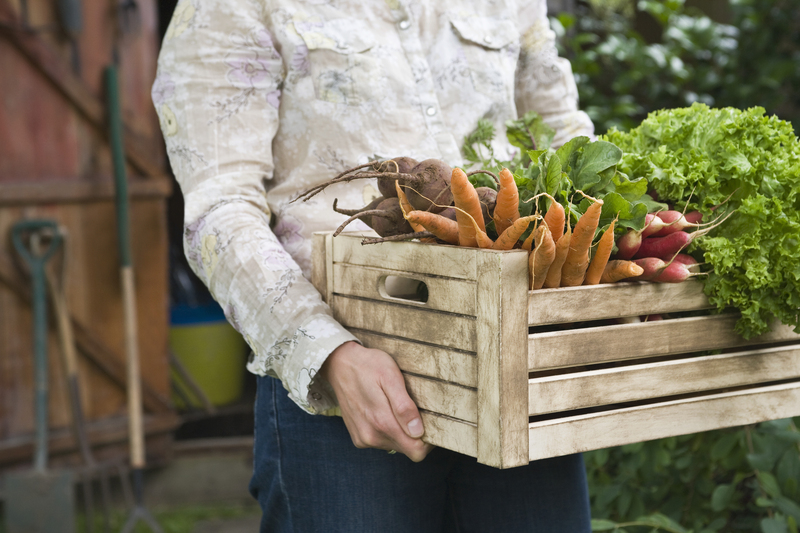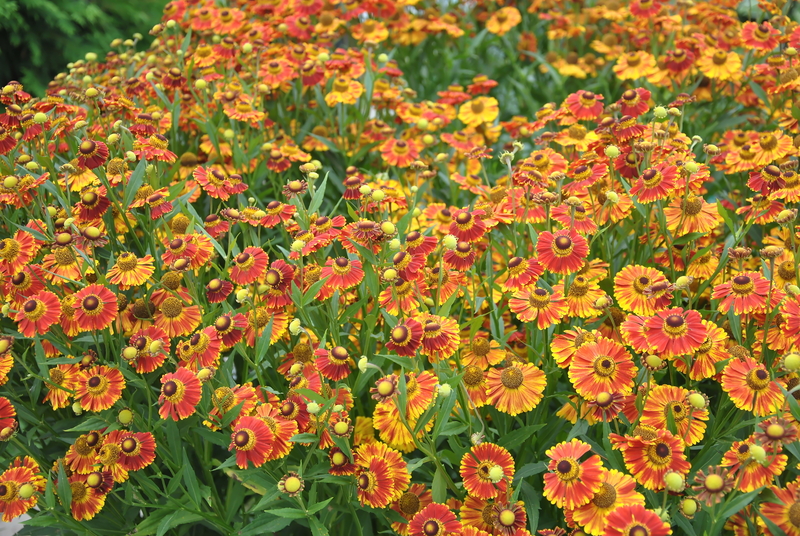Flourishing Orchids: Best Practices Revealed
Posted on 07/09/2025
Flourishing Orchids: Best Practices Revealed
Orchids are esteemed for their exotic beauty, elegance, and the breathtaking variety of shapes and colors they present. Cultivating these intricate flowers and ensuring their healthy growth is both an art and a science. Whether you're a gardening enthusiast or a beginner, understanding best practices for flourshing orchids will empower you to nurture these stunning plants inside your home or in your garden. In this comprehensive guide, we reveal essential tips and techniques to ensure your orchids grow vibrantly and bloom year after year.

Understanding Orchid Varieties and Their Unique Needs
Common Types of Orchids for Enthusiasts
Among the diverse species of orchids, a few have captured the hearts of growers worldwide:
- Phalaenopsis (Moth Orchid): Known for their resilience and frequent blooming.
- Cattleya: Cherished for their fragrant and large, showy blooms.
- Dendrobium: Elegant, cane-like stems with dazzling flowers.
- Oncidium (Dancing Lady): Delicate flowers resembling ballerinas in tutus.
- Vanda: Stunning blooms that thrive in high humidity and bright light.
Each variety requires particular care to flourish. Understanding their natural habitat equips you to mimic the best conditions at home.
The Foundation: Choosing the Right Orchid and Potting Mix
Orchid Selection Tips
- Buy healthy plants: Choose orchids with firm, green leaves and plump roots.
- Check the roots: Avoid orchids with yellow, mushy, or shriveled roots.
- Look for new growth: Signs of new leaves or roots suggest a thriving plant.
Best Potting Mixes for Flourishing Orchids
Unlike most houseplants, orchids rarely thrive in regular potting soil. Instead, they prefer mixes designed for airflow and drainage.
- Bark-based Mixes: Ideal for epiphytic orchids like Phalaenopsis and Cattleya.
- Sphagnum Moss: Retains moisture and suits orchids needing more water.
- Perlite or Charcoal: Helps with aeration and prevents compaction.
- Coconut Husk: A sustainable, moisture-retentive alternative.
It's important to repot your orchid every 1-2 years to refresh the potting medium and prevent root rot.
Optimal Light: The Cornerstone of Vibrant Orchid Blooms
How Much Light Do Orchids Really Need?
Light requirements differ by species, but most orchids need bright, indirect sunlight. Direct midday sun may scorch orchid leaves, whereas insufficient light leads to poor blooming and weak growth.
- Phalaenopsis: Medium light, east or west windows are ideal.
- Cattleya and Vanda: High light, suitable for south-facing windows with sheer curtains.
- Dendrobium and Oncidium: Moderate to high light, but avoid harsh sun.
Tip: Healthy orchid leaves are bright green. Dark leaves mean too little light, while yellow or red tinges signal too much sun.
Essential Watering Practices for Thriving Orchids
How to Water Orchids Properly
Over-watering is the most common cause of orchid failure. Here's how to get it right:
- Let the roots dry out: Water only when the top inch of the mix feels dry.
- Water thoroughly: Let water drain completely--never let orchids sit in soggy conditions.
- Use room-temperature water: Avoid ice-cold or hot water that can shock the roots.
- In humid climates: Reduce watering frequency; in dry environments, increase it slightly.
Tip: Most orchids prefer to be watered in the morning, allowing excess moisture to evaporate during the day.
Humidity: The Secret to Lush, Flourishing Orchids
Ideal Humidity Levels
Orchids love a humid environment, mimicking their tropical origins. Aim for 50-70% relative humidity.
- Grouping plants together: Increases ambient humidity.
- Use a humidity tray: Place the orchid pot above water-filled pebbles (never let the pot touch the water).
- Misting: Light misting helps, but avoid wetting the flowers.
- Humidifiers: A room humidifier is a worthwhile investment for serious growers.
Dry air can stunt orchid growth and hinder blossoming, making humidity management critical for successful orchid cultivation.
Fertilizing Orchids: Nourishing for Brilliant Blooms
Best Fertilizers and Feeding Schedule
Orchids require frequent but gentle feeding. Use a balanced, water-soluble fertilizer (20-20-20 or similar) diluted to quarter strength.
- During active growth (spring and summer): Fertilize every 2-3 weeks.
- During dormancy (fall and winter): Reduce to once a month.
- "Weakly, weekly" rule: Apply diluted fertilizer more often instead of stronger doses less frequently.
Every few months, flush the potting medium with clear water to remove fertilizer salts that can damage roots.
Proper Air Circulation: A Vital Element for Orchid Health
Still air can lead to fungal diseases and pest infestations. Orchids flourish with good air movement.
- Open windows when weather permits.
- Use fans on a gentle setting nearby.
- Avoid overcrowding plants which blocks airflow.
Tip: Never direct cold drafts at orchids. Consistent, mild airflow is best.
Repotting: Ensuring Long-Term Orchid Flourishing
When and How to Repot Orchids
Repotting is necessary every one to two years, or if the potting mix breaks down, drains poorly, or roots outgrow the container.
- Choose a slightly larger pot: Only increase size if roots are cramped.
- Gently remove old mix: Clean off as much old medium as possible and trim away rotted roots.
- Use fresh, sterile orchid potting mix: Prevents diseases and rejuvenates the plant.
Repotting right after blooming allows the orchid time to recover before entering its next growth phase.
Pest and Disease Management in Flourishing Orchid Gardens
Preventing and Treating Common Orchid Problems
Even with the best care, orchids can face pests and diseases. Early intervention is crucial.
- Mealybugs and scale: Remove with cotton swabs dipped in rubbing alcohol.
- Spider mites: Increase humidity and gently wash leaves.
- Fungal and bacterial spots: Prune and discard affected leaves, avoid overhead watering.
- Root rot: Replace soggy potting mix and remove damaged roots.
Inspect new plants carefully before introducing them to your collection to prevent infestations.
Encouraging Blooming: Secrets for Persistent Orchid Flowers
What Triggers Orchids to Flower?
- Seasonal Temperature Changes: A slight nighttime temperature drop promotes blooming.
- Proper Feeding: Fertilizing with a "bloom booster" (higher in phosphorus) can enhance flower spikes.
- Sufficient Light Exposure: Essential for flower development.
- Rest Period: Dendrobiums and some others need a dry "rest" to trigger blooming.
Pro Tip: Don't move your orchid frequently once the flower spike appears. Stability supports blossoming.
Advanced Tips for Flourishing Orchid Collections
- Label your orchids: Track varieties and their specific care routines.
- Record watering and feeding: Avoid over- or under-caring for your plants.
- Experiment with microclimates: Place orchids in different home areas to see which thrive best.
- Join orchid societies: Learning from experienced growers accelerates your knowledge.

Frequently Asked Questions about Growing Flourishing Orchids
How often should I water my orchids?
Water frequency depends on the orchid type and environment. Generally, once a week is sufficient; always allow the potting medium to dry between waterings.
Why are my orchid leaves turning yellow?
Yellowing leaves are often a sign of overwatering, sunburn, or natural aging. Evaluate care routines and adjust accordingly.
How do I get my orchid to rebloom?
Ensure the plant receives adequate light, correct watering, and a drop in night temperature. Cut dead flower spikes and be patient; some species bloom just once a year.
Conclusion: Your Path to Flourishing Orchids
Whether you grow one orchid or an entire collection, following best practices for flourishing orchids will reward you with healthy plants and mesmerizing blooms. Remember: choose the right variety, provide appropriate light and humidity, water sparingly, feed regularly, and observe your plants closely. Dealing with pests and diseases promptly, repotting as needed, and encouraging blooming through correct care routines are vital steps for thriving and resilient orchids. With patience and attention, your orchids will not only survive--but truly flourish.
Start your orchid journey today with these essential tips, and watch as your plants transform into a spectacle of lasting beauty and elegance!

